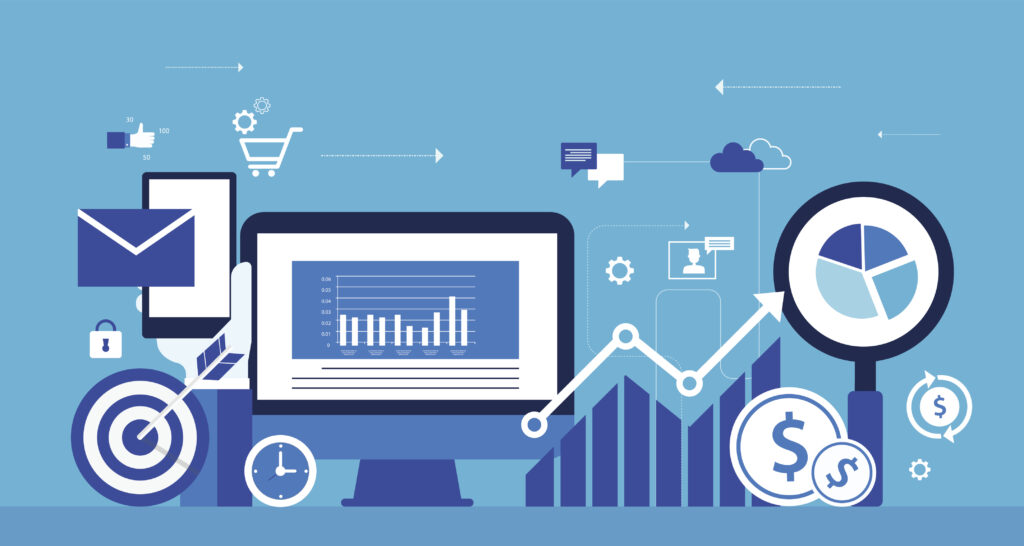
In today’s fast-paced and ever-evolving digital world, technology is no longer just an advantage; it’s a necessity. Whether you’re running a business, managing a team, or simply navigating your daily professional life, understanding technology is crucial to success. Yet, for many, the digital world can seem daunting—filled with jargon, complex systems, and constantly changing trends. If you’re someone with 0-5 years of experience in any field, or even a seasoned professional who’s new to this space, the thought of diving into the world of digital transformation can be overwhelming. However, demystifying technology doesn’t have to be complicated.
This guide is designed to simplify the concepts and terms you’ve probably heard but may not fully understand. By the end of this post, you’ll have a clear grasp of the digital tools and trends shaping today’s business world and how you can leverage them to enhance productivity, efficiency, and innovation within your organization.
Why Should You Care About Understanding Technology?
In the age of digital transformation, businesses that fail to adapt will be left behind. Your ability to make informed decisions about software, tools, and platforms can have a profound impact on your company’s bottom line. Whether you’re involved in sales, marketing, or management, having a basic understanding of how digital systems work allows you to:
- Stay competitive: Companies that adopt technology efficiently stay ahead of the curve.
- Boost productivity: Digital tools streamline processes, automating tasks and freeing up valuable time.
- Enhance communication: A clear grasp of technology improves internal and external communication, increasing collaboration and innovation.
- Make data-driven decisions: Understanding technology allows you to harness the power of data analytics, leading to more accurate business decisions.
This isn’t just about tech professionals anymore. The digital world landscape affects everyone, from marketing managers using automation tools to accountants navigating cloud-based systems. Gaining confidence in these areas is essential for anyone aiming to succeed in today’s competitive market.
Who Is This Guide For?
This guide is tailored for professionals who may not have a technical background but want to gain a better understanding of the digital world tools and strategies shaping their industries. Whether you’re a small business owner, a new professional with limited tech exposure, or someone looking to expand your knowledge base, this blog will provide clear explanations and practical advice on digital tools and systems you can implement right away.
The Foundations of Digital Literacy
- What Is Digital Literacy?
- Definition and importance of digital literacy in today’s business world.
- Examples of basic skills: navigating the internet, using cloud storage, and understanding file formats.
- Why Businesses Should Prioritize Digital Skills Development
- How companies can foster a culture of learning.
- Benefits of digital upskilling for employees and business outcomes.
Breaking Down Key Technology Terms
- The Cloud: What Is It and Why Does It Matter?
- Explanation of cloud computing and its impact on businesses.
- Practical example: Storing documents on Google Drive or Dropbox.
- Artificial Intelligence and Machine Learning
- Simplifying AI/ML for beginners and explaining how they’re transforming industries.
- Example: Chatbots improving customer service, or AI in sales forecasting.
- Big Data: Understanding Its Role in Business Decisions
- Explanation of big data, its sources, and its applications in marketing and sales.
- Example: Using customer data to personalize marketing campaigns.
The Tools You Need to Know
- Customer Relationship Management (CRM) Systems
- How CRMs improve customer interactions and streamline sales processes.
- Examples of popular tools: Salesforce, HubSpot.
- Project Management Tools
- Importance of project management in keeping teams organized.
- Examples: Trello, Asana, Monday.com.
- Marketing Automation Tools
- How automation saves time and increases efficiency in marketing campaigns.
- Example: Scheduling social media posts or sending automated emails.
Navigating the Digital Ecosystem
- Understanding E-Commerce and Digital Payments
- Basic introduction to online stores and payment gateways.
- Example: PayPal, Stripe, and their impact on business growth.
- The Role of Social Media in Business
- How social platforms influence brand visibility and customer engagement.
- Example: Instagram and LinkedIn for B2B marketing.
- Cybersecurity Basics for Professionals
- Simple strategies to protect your business data.
- Example: Using two-factor authentication (2FA) and recognizing phishing emails.
Digital World Transformation: Adapting to the Future
- What Is Digital Transformation?
- Definition and reasons why businesses should embrace digital transformation.
- Example: Digital transformation initiatives in retail and hospitality.
- The Future of Work: Remote Work, Collaboration Tools, and Flexibility
- How technology is changing where and how we work.
- Example: Using Zoom, Slack, or Microsoft Teams for remote collaboration.
- Tech Trends to Watch: 2024 and Beyond
- Overview of emerging trends like 5G, blockchain, and the Internet of Things (IoT).
- How these innovations are likely to impact businesses in the near future.
Conclusion
By breaking down these complex concepts into digestible insights, you can navigate the digital world with confidence. The technologies that once seemed overwhelming are now tools you can leverage to improve your business and career. Understanding the digital landscape is no longer a choice—it’s a necessity for professionals who want to thrive in today’s tech-driven marketplace. Whether you’re just starting out or are looking to sharpen your tech skills, this guide will help you stay informed and prepared for the future.


